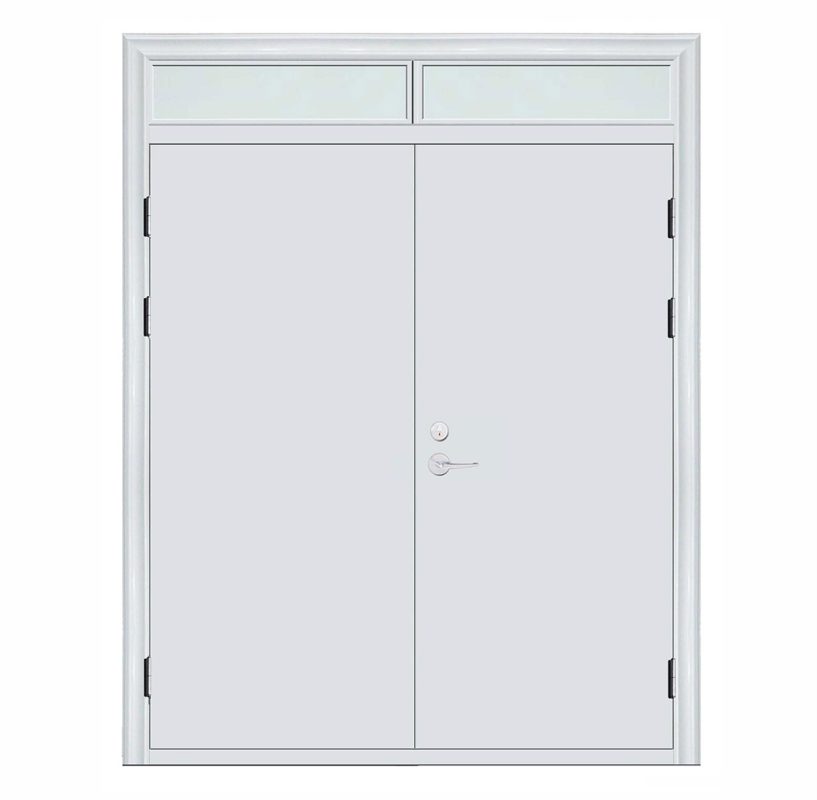Standard Fire Door Sizes: A Comprehensive Guide for Optimal Fire Protection

As a leading fire door manufacturer in China, we aim to provide clear and comprehensive information about the various fire door standards to help our clients make informed decisions. Understanding the different standard fire door sizes is crucial for selecting the right fire door for your building, ensuring maximum safety and compliance with fire regulations. In this article, we will delve into the classifications and standard sizes of fire doors, tailored to specific applications and fire protection levels.
Fire Door Classification and Their Standard Sizes
Fire doors are classified into three main categories based on their fire resistance and usage:
- Class A Fire Doors:
- Primary Use: These doors are typically used in fire compartmentation, such as passageways that separate different fire zones.
- Standard Size: Width of 900mm, height of 2100mm, and a thickness of 55mm.
- Special Considerations: In larger commercial buildings like shopping malls and hotels, variations in size may be necessary, but generally, Class A fire doors fall within these dimensions.
- Class B Fire Doors:
- Primary Use: Commonly installed in smoke-proof stairwells and safe exit passageways.
- Standard Size: Width of 800mm, height of 2000mm, and a thickness of 45mm.
- Design Specifics: These doors are slightly smaller than Class A doors, reflecting their specific function in controlling smoke and fire spread.
- Class C Fire Doors:
- Primary Use: Utilized in general fire compartmentation where lower fire resistance is required.
- Standard Size: Width of 700mm, height of 1900mm, and a thickness of 40mm.
- Application: Suitable for less critical areas while still providing adequate fire protection.
Standard Fire Door Sizes for Different Building Types
Fire door sizes can vary significantly depending on the building type and its specific fire safety requirements. Here are some common scenarios:
- Residential Buildings:
- Single-Leaf Fire Door: Width ranges between 900mm to 1000mm, with a height of approximately 2100mm.
- Double-Leaf Fire Door: Width can reach up to 1200mm, while the height remains around 2100mm.
- Mother-and-Child Fire Door: Typically around 1200mm wide, with a customizable height based on specific needs.
- Commercial Buildings (e.g., Offices, Shopping Malls, Hotels):
- Single-Leaf Fire Door: Width ranges between 900mm to 1000mm, same as in residential buildings.
- Double-Leaf Fire Door: Width can be as large as 1500mm or more, depending on the layout and fire safety requirements.
- Industrial Facilities:
- Small Entrances: Single-leaf fire doors maintain the standard width of 900mm to 1000mm and a height similar to residential buildings.
- Large Entrances and Exits: Double-leaf fire doors can exceed 1500mm in width, designed to accommodate the flow of large equipment and personnel during emergencies.
- Healthcare Institutions (Hospitals, Clinics):
- Standard Doors: Single-leaf fire doors are generally 900mm wide.
- Special Areas: Fire doors in operating rooms or intensive care units may exceed 1000mm in width to facilitate the movement of medical equipment and staff.
- Educational Institutions (Schools, Universities):
- Classroom Doors: Often wider than standard to allow for quick evacuation, potentially exceeding 1200mm.
- Special Cases:
- Class B Fire Doors: Heights can go up to 2700mm, often including transom windows for additional visibility and airflow.
Key Considerations for Fire Door Installation
When selecting and installing fire doors, it is essential to ensure that the dimensions of the door are compatible with door frames, leaf, and other accessories, achieving a seamless fit with no gaps. Proper installation by certified professionals is critical to maintain the integrity of the fire door’s performance.
Additionally, all fire doors must comply with local building codes and national standards, such as the Chinese GB 12955-2008 for fire door specifications. It’s not only about choosing the right size but also ensuring that the fire door is manufactured, tested, and installed to the highest safety standards.
Conclusion
Choosing the correct standard fire door size is vital for ensuring optimal fire protection in any building. The dimensions vary based on the fire rating and intended application, but adherence to strict guidelines and standards is crucial. We hope this article has provided valuable insights into the various fire door sizes and their applications. For more information or to explore our wide range of yunngd.com, feel free to contact us. Your safety is our top priority.
